The Anglo Norman period in English Literature: 1066-1300

The blog on the Anglo Norman period in English Literature includes:
- Status of English, Latin and French
- Impact of Anglo Norman conquest on English Literature
- Poetry of Anglo Norman period in English literature
- Medieval English Literature: Prose
- Middle English Literature: Histories in Latin
- Anglo Norman Literature in French
- Development of French Romances
- Development of the English Romance
- Concept of Courtly Love in Anglo Norman literature
- Conclusion
The Anglo Norman period in English Literature involves the literary sensibilities and literary works that was being written in England during the years 1066 CE to 1300 CE. The term ‘Norman’ is derived from ‘Norsemen’. These Normans arrived in England after William the Conqueror defeated Harold Godwinson in the battle of Hastings on 14th October 1066 CE. This blog provides a literary background to Medieval England and describes the kind of literature that was being produced during the period.
The Norman conquest of England in 1066 CE is popularly considered as a political, social, cultural and literary landmark that distinctly separates the Anglo-Saxon literature or the Old English literature from the Anglo-Norman or the Middle English literature. The Norman were extremely adaptable people and when they arrived in France, they accepted the French culture, language, and also practiced Christianity as their own religion. The Norman are known to have built magnificent castles to assert their political dominance, and spectacular churches. The Norman bishops too had significant political and religious authority. Interestingly, most of the earlier Anglo Norman kings in England were focussed on safeguarding and expanding their Continental possessions and were therefore mostly absent from the country. The Anglo-Norman were able to expand their French territories during the rule of the Plantagenet King Henry II, and his marriage to the divorced wife of Louis VII of France, Eleanor of Aquitaine. It was during this period that the English rulers began to consider them as the rightful kings of France as well. This claim eventually became the reason for the Hundred Years War.
The Norman invasion of England did not cause a French migration to England. When William the conqueror ascended the English throne, he brought with him just 6000 men out of whom most were mercenaries who left the country after winning the battle of Hasting by 1077. The ruling French aristocracy that replaced the English nobility usually comprised of the ruling class to whom William gave English estates after becoming the King of England. There were not many significant changes in general English life otherwise.
Status of English, Latin, and French
Understanding Anglo Norman period in English literature requires a clear knowledge about the statuses of languages in England during the medieval ages. With the arrival of the Norman French, Anglo Norman England became a country of four languages. Latin retained its position as the international language of learning, history, theology, and science. Although it was no more written in England, it was the common language of communication among foreign nationalities, and was also used in universities. During the Anglo Norman period, Norman French became the language of the court and aristocracy while English was spoken by majority of the masses. Eventually, to better interact with the English population, an increasing amount of nobility became bilingual. Additionally, there also existed Celtic speaking groups in Ireland, Wales, Brittany, and Cornwall.
Since England now had four languages, there also existed a relation among them. For instance, it was the Bible and lives of saints written in Latin that provided the material for both Old English as well as Old French poetry and prose. The aristocracy and nobility belonging to the Anglo Norman period was fascinated by the Celtic legends and tales. It were the Breton storytellers who inspired the Anglo Norman poets like Marie de France and Chrétien de Troyes. These poets were most probably bilinguals who wrote about the Celtic legends for a French audience.
Status of English during the Anglo-Norman period
With the arrival of the Norman French, English no longer remained the language of the court or that of the aristocracy. It was replaced by the Norman French, which also became the literary language of aristocracy and court. The Anglo-Saxon language, which was at this stage developing into middle English, became the language of the general people or of the lower classes. It was only by the fourteenth century that the status of English language improved and took over French as the major literary language. English as a language had undergone many significant changes during the medieval time. For example, it lost the inflections of the Anglo-Saxon period and many French terms were added to its vocabulary. This did not mean that there was a complete obliteration of the traditional Old English or Anglo-Saxon English. There was a continuity in the transition of the Old or Anglo Saxon literature to the Middle English literature.
During the Middle Ages, there existed many dialects of the Middle English as the result of the Anglo-Norman conquest. Due to the Norman French invasion, Wessex lost all the political and cultural power. This also resulted in the West Saxon dialect losing its prestige as the most prominent language of literature. Additionally, since Norman French replaced English as the language of court and aristocracy, there was no pressure or competition among various English dialects for supremacy. Therefore, writers in English began to write in their own regional dialect. This is the reason that English literature during the Anglo-Norman period was written in many dialects of the Middle English. This Middle English descended from the Anglo Saxon roots.
- The Northumbrian dialect of the Anglo-Saxon was split into Scots and Northern English.
- Mercian became East Midland and West Midland.
- West Saxon dialect was split into the Southwestern and Central-Southern dialects.
- The Kentish dialect of the Anglo-Saxon period became the foundation for the South-east dialects.
The English literature during this time was being written in regional dialects. With time, as English began to replace French as the dominant language of court, culture, and literature, it was the dialect of London that was used. The dialect of London was originally a Southern dialect with Southeastern characteristics. However, by the time it was used by Chaucer, it had turned into the East Midland dialect. Thus, eventually, when English became the dominant language of England, its dialect was the East Midland and not the West Saxon dialect that used to dominate during the Anglo Saxon period.
Status of French during the Anglo-Norman period
One of the most significant and lasting changes that was brought in England by the Anglo-Norman conquest was that French became the language of court and aristocracy. Therefore, all the literature that was written under or for the court was produced in French. This literature was also French in tone and sensibilities. Since French had become the language of the elite and the court, the Anglo Norman literature of the twelfth and thirteenth centuries included significant works in French. Most of the French works were religious and didactic.
Status of Latin during the Anglo-Norman Period
Apart from English and French being spoken in England, another significant language during the Anglo Norman period was Latin. Latin retained its position as the language of the learned clergy. Latin had not been able to dominate during the Anglo Saxon period as there were very few people who could speak it. This had caused the rise of the vernacular English literature at that time. The constant attacks by the Danish and the Vikings, impacted Latin learning in England and eventually resulted in the development of vernacular English prose that was far more developed than French prose. However, with the advent of the Normans, Latin was restored as the language of serious didactic literature. This was extremely detrimental to the English prose that had developed during the Anglo Saxon period. English prose only re emerged later. During the Anglo-Norman period, Latin was not just the language of religious works. All the Anglo-Norman literature about science, philosophy, history was written in Latin. Moreover, all the legal and official documents were written in Latin and began to use French only in the 13th century. Anglo-French remained the legal language of England till 1731 CE.
Impact of Anglo-Norman conquest on English Literature
The French literary attitudes, sensibilities, and methods had been dominating almost all of Europe between the twelfth and the fifteenth centuries. Therefore, it is interesting to acknowledge that the French literature would have had a significant influence on English literature even without the Norman conquest by William the conqueror in 1066 CE. Nevertheless, the Norman Conquest disrupted the normal course of English literature in many significant ways. The Anglo-Norman conquest of England immediately exposed England to the European French culture that was already changing the medieval European culture and literature. We must not assume that the Anglo-Saxon England and its literature was entirely cut-off from European culture. The arrival of the Norman French rulers in England expedited this exposure and established a more active, continuous, and consistent relationship to the continent.
The recovery of an English poetic style after the Norman conquest of 1066 was otherwise a slow process which took almost until 14th century. Till then, there was no great poet and individual decent poetry was scattered throughout the years. There was no sudden revolution of sensibilities and taste and obliteration of the Anglo-Saxon alliterative verse altogether. It was a rather slow process and the alliterative poetry did not fade all of a sudden. English poetry of the Middle ages began to slowly adapt and imitate from the French literature. At the same time the English language was also undergoing significant changes in its vocabulary as well flexibility. The possibilities of English rhyme would have been extremely restricted without the French element in the English language.
Impact on Alliteration and Oral tradition
The oral tradition that was popular among the masses was not impacted by the Norman conquest and the arrival of the French aristocracy. One of the significant changes in the Anglo Saxon literature was that its alliterative verse tradition was replaced by the French rhymed verses, and it was not till the 14th century that the alliterative poetry revived and regained popularity. The alliteration verses that belonged to the Anglo-Norman literature were simplified and represented the popular oral tradition. This was significantly different from the technically subtle alliterative verses of the Anglo-Saxon literature.
Eventually, the alliterative verse split two ways- the first kind eventually acquired metrical regularity and rhyme. In other cases, the verses became even more strictly alliterative that was eventually revived in the 14th century. This kind of alliterative poetry was produced in Northern and Western parts of England as they retained the English-ness the most.
Impact on Heroic poetry
Unlike alliteration, heroic poetry was unable to survive in the medieval ages and the Anglo Norman period in English literature saw a decline in heroic verses. The Norman conquest and the French domination throughout Europe brought an end to the Roman Empire and led to the formation of a new Europe. By the beginning of the 12th century, Europe had become a Christian civilization with its own culture and societal norms. The heroic age that was so particular to the Anglo Saxon period no longer existed as it was replaced by the new courtly sophistication, ideals and manners. With the middle ages, Europe no longer remained a heroic society as it used to be. It had transitioned into a feudal society with its own protocols regarding honor and service. It had a different literary patronage, social conditions, and relations between the opposite genders. Even though it was not the Anglo-Norman conquest that brought these changes to England, it definitely acted as a catalyst to these otherwise inevitable changes that already begun to show during the late Anglo-Saxon era.
Poetry of Anglo Norman period in English literature
The Anglo-Saxon alliterative verse continued in the middle ages, but now catered to the general people and was specifically for oral recitation. The Worcester Fragments include works like 'Grammar' by Aelfric which was written in the West Saxon dialect. It also included a short alliterative poem that lamented that people were no longer taught in English by saints and scholars. The poem is written in Middle English. Another important but fragmentary Anglo-Saxon work belonging to the Anglo Norman period in English Literature is ‘Debate between the Body and the Soul’.
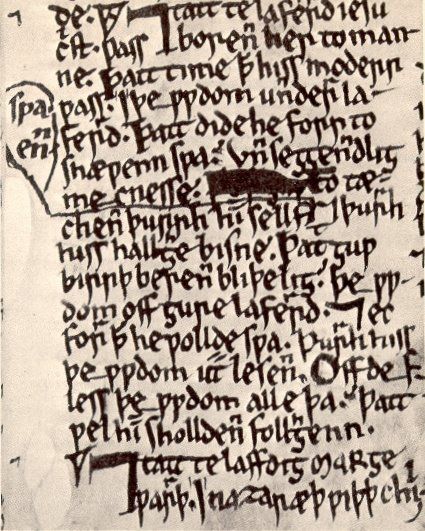
‘Orrmulum’ composed by Orm or Ormin around the year 1200 CE, is a significant poem that breaks away from the Anglo-Saxon tradition. Ormin had aimed to translate the Gospels into English verse. However he composed these verses neither in the French rhyme, nor in alliteration belonging to the Anglo-Saxon tradition. Orrmulum is about 10000 lines where each line is of exact same length and metrical pattern. The poem is a rather tedious work of literature. Following the same meter as Orrmulum, ‘Poema Morale’ or ‘Moral Poem’ is an English sermon written in verse. However, it employs rhyme, is not as tedious and mechanical as the former and is more flexible. The poem deals with common medieval religious topics such as horrors of Hell, joys of Heaven, the last Judgement, etc.
With the influence of French rhyme, octosyllabic couplets became extremely popular in the Anglo-Norman literature in English. A significant example of octosyllabic verse is Cursor Mundi, a lengthy poem of 30000 lines about incidents of both New and Old Testaments including various religious topics. The poem is didactic in nature as most of the medieval English literature. With the French rhyme and metrical influence, Middle English poets had infinite opportunities. ‘Love Rune’ by Thomas of Hales is the earliest of successful religious poems composed in Middle English. It emphasizes the vanity of earthly love as opposed to the love of Christ.
During the Anglo Norman period, there existed a dominant sense that earthly life was transient. While the alitterative verses of the Anglo Saxon period were an apt medium to write heroic poetry, the new sensibility of the Anglo Norman period/Middle ages demanded a different and a more flexible medium of expression. Therefore the new French rhyme and meter depicted a significant shift in not only English but European sensibilities.
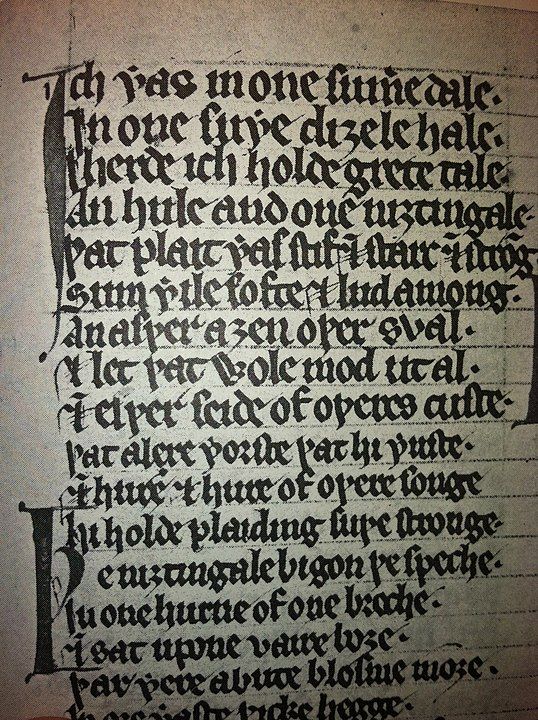
The Octosyllabic couplet came to English literature from French. It was not only used in religious and didactic works and romance, but was used in many other types of poetry. One of the most successful poetry belonging to the Anglo Norman literature in English that uses octosyllabic couplet is ‘The Owl and the Nightingale’. The poem was composed around 1200 CE and is the first example of a verse debate in English. The debate is between the two birds and allegorically depicts two ways of life: the monastic and the secular or for two kinds of poetry, the amorous, and the didactic. Nobody wins the argument towards the end. The poem gives life to a conventional form and exceptionally paints the Owl, the Nightingale and the everyday life of the Anglo Norman period. Without a doubt, the Owl and the Nightingale is an exceptional early Middle English poem.
As mentioned earlier, the alliterative verse belonging to the Anglo-Norman literature was simplified and was written for the masses. For example, Layamon’s translation of Roman de Brut, titled 'Brut' employs alliteration without any rhyme. In the 14th century, more alliterative verses appeared in English literature. These works included religious poems, as well as satirical and allegorical literature. Significant poems like ‘Piers Plowman’, ‘Gawain and the Green Knight' are some examples of alliterative verses that belonged to the “Alliterative Revival” of the 14th century. Examples of religious alliterative verses belonging to this revival of the 14th century are ‘Pearl’, ‘Patience’, and ‘Purity’.
Medieval English Literature: Prose
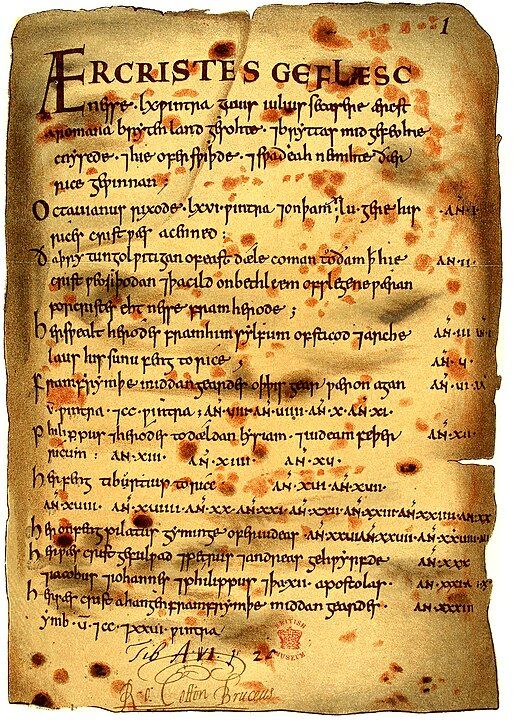
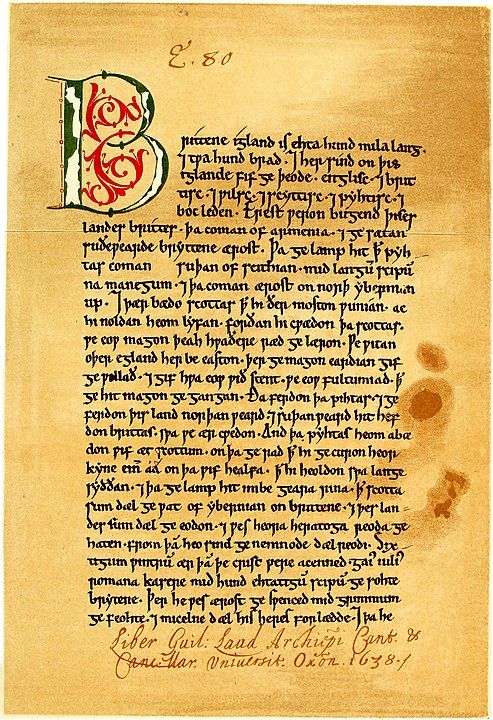
Pages from the Anglo Saxon Chronicle
As we know, the Anglo Saxon prose was among the highest developed among all of European literature. The ‘Anglo-Saxon Chronicle’ had been documenting history for centuries. The last entry to the Chronicle was made in the Peterborough Chronicle in the mid 12th century. English prose during the Anglo Norman period did not flourish. There was an end to the historical prose written in English during the Anglo-Saxon period. With the Norman conquest came the Norman clerics who took over the national administrative designations in England. They replaced English language with Latin for both official communication as well as history. It was with the Tudors that the historical prose in English was written again. During the Anglo-Norman period, most of the attention was attracted by the new French rhyme and all the leading writers turned to rhymed verses rather than prose. Another important factor to consider is that there was not standard dialect during the Anglo-Norman period and the dialectical differences made the evolution of a standard English prose impossible.
The only area where the English prose was not lost was in homilies and devotional prose. Religious instructions to the general masses continued even after the Anglo Norman conquest. However, the West Saxon dialect was no longer the dominant English dialect of the prose. Since the instructions were for the general local population, it could be best carried out in their respective local dialects. Thus, the Anglo-Saxon homiletic tradition continued (specially in the west of England) and the English prose flourished side by side of the Anglo-Norman literature containing French verses. It was the religious prose in the West Midland dialect that continued till the Tudors and kept the English prose alive.
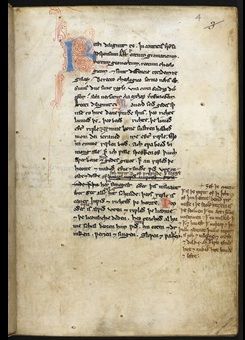
Prose in English was also employed for sermons and translations of the lives of saints. One of the earliest prose in English of this kind is called the ‘Katherine Group’. The work contained five different prose one of which narrates the lives of three virgin saints: Katherine, Margaret, and Juliana. It also emphasizes the advantages of virginity while pointing out the discomforts of a marriage and a married life. Another prose in Katherine Group is a homily where a knowledgeable master called Wit struggle with a foolish mistress called Will to control a soul. The prose belonging to the Katherine Group were written in alliteration. The prose was written for female audience. Another prose belonging to Anglo Norman literature was the ‘Ancren Riwle’ or the 'Ancren Wisse' (Anchoresses’ Rule or Anchoresses’ Guide). It was an instruction manual for three young women who wanted to become anchoresses. It was written around the year 1200 in West Midland dialect and was enormously popular. The work is significant as it uses proverbs, anecdotes, and minute details of everyday life. ‘Ancren Riwle’ was extremely influential for Richard Rolle, a devotional writer belonging to the 14th century, and his follower Walter Hilton.
Richard Rolle of Hampole was a devotional writer who is an important figure in English prose as he was among the first who infused personal emotions in religious writings. Rolle wrote in northern dialect of Yorkshire and his prose had an element of modernity as he reduced the inflections just like in modern English. Rolle is one of the most significant writers and was the one who kept the English prose alive.
His follower Walter Hilton was another significant prose writer. He wrote ‘The Scale of Perfection’ . Contemporary of Hilton was John Wyclif. Wyclif was different from Rolle and his followers. While Rolle was a mystic who was withdrawn from the world, Wyclif was a politician, philosopher, who attacked certain practices of the Church. He is also responsible for the very first complete English translation of the Bible. The earlier version of this translation was completed by Nicholas of Hereford while the later version was translated by John Purvey.
Other religious work in English prose during the 14th century is ‘Ayenbyte of Inwyt’ (Prick of Conscience) by Michael of Northgate. The prose was extremely dull and is only significant because it was the work that haunts Stephen Dedalus in James Joyce’s Ulysses. It was written in the pure Kentish dialect of Canterbury. The Anglo-Saxon prose was way more developed and advanced than the French prose. Even though the Anglo Saxon prose would have been far more effective medium for historical writing, most of the Middle English historical writing was in French verses.
Middle English Literature: Histories in Latin
Histories in Latin constitute the most interesting part of Anglo-Norman literature. Among the most prominent Anglo-Latin historian were William of Malmesbury and Matthew Paris. ‘Historia Regum Britanniae’ written by Geoffrey of Monmouth was one of the most important histories written in Latin during the Anglo Norman period. It became a source of many literary works. Monmouth was a Welshman and his history documents the Anglo-Saxon invasion from the perspective of the Britons. His history contains many figures that became popular in imaginative literature. It includes stories about Lear, Gorboduc, and Cymbeline. The history also contains the first complete story of King Arthur, rather than his 12 knights.
Another significant work of Anglo-Norman literature written in Latin is ‘De Nugis Curialium’ or ‘Courtiers’ Trifles’ written by Walter Map. This work was different from the usual Anglo Norman literature in Latin which was solemn. Courtiers’ Trifles is a collection of miscellaneous works that are organized as a satire about contemporary abuses. The work includes folktales, witty observations, amusing stories, and various entertaining materials that are in stark contrast to the religious, philosophical works that were written in Latin.
The Goliardic tradition
Walter Map was also the writer of works belonging to the Goliardic tradition. The Goliards were wandering scholars and young clergy who wrote in protest of various contradictions within the Church. They wrote satirical, irreverent, amorous, and even indecent lyrics in Latin. Poems belonging to the Goliardic tradition were usually written to be sung. The poems belonging to the Goliardic traditions are significant as they depict the transition from the classical Latin verses to the rhymed accentual Latin in the medieval European poetry. This was the time when there was a shift in the European taste for poetry.
Anglo Norman Literature in French
The Anglo Norman literature of the twelfth and the thirteenth centuries included significant works in French. Most of the French works were religious and didactic. One such work is ‘Le Chasteau d’Amour’ composed by bishop of Lincoln Robert Grosseteste. Its and elaborate allegory of a castle and its defenders that praises the aspects of Christian theology and the Virgin.
Another French poem belonging to Anglo-Norman literature is ‘Voyage of St. Brendan’. The poem includes a rich and lively collection of adventures. Other than poems, Anglo-Norman literature in French also includes chroniclers. One of the most significant chronicler was Wace who translated Monmouth’s ‘Historia Regum Britanniae’ from Latin to French. The translation was titled ‘Roman de Brut’. Along with the translation, Wace also included stories about King Arthur. In fact, he was the first to mention the Round Table. Where 'Historia Regum Britanniae' by Geoffrey of Monmouth was a straightforward historical account, its translation as ‘Roman de Brut’ by Wace was an imaginative verse. Roman de Brut was translated from French to English by Layamon in early 13th century. It was in this translation that the Arthurian story first appeared in the English literature.
Development of French Romances
In French, ‘roman’ was initially referred to the work written in French language. The Anglo Norman period in English Literature saw the development of romances and courtly tradition in English. The heroic verses belonging to the Anglo-Saxon literature were stern, and dealt with the achievements and lives of heroes who existed in reality. Therefore, heroic poetry was realistically treated. On the other hand, Romance is escapist and marvelous. Fighting and war in heroic poetry was a grim and necessary affair with a specific purpose, and most often against heavy odds. Moreover, it often led to the death of the honorable and valiant hero. Courage, valiance, honor were traits of utmost importance. On the other hand, in romance, characters do not fight out of necessity but out of character and for fashion. Fighting becomes like a stylized sport that is done ritualistically.
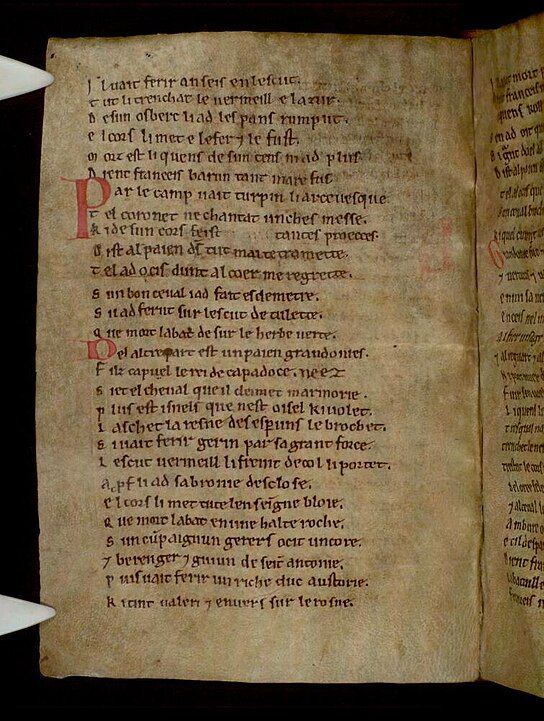
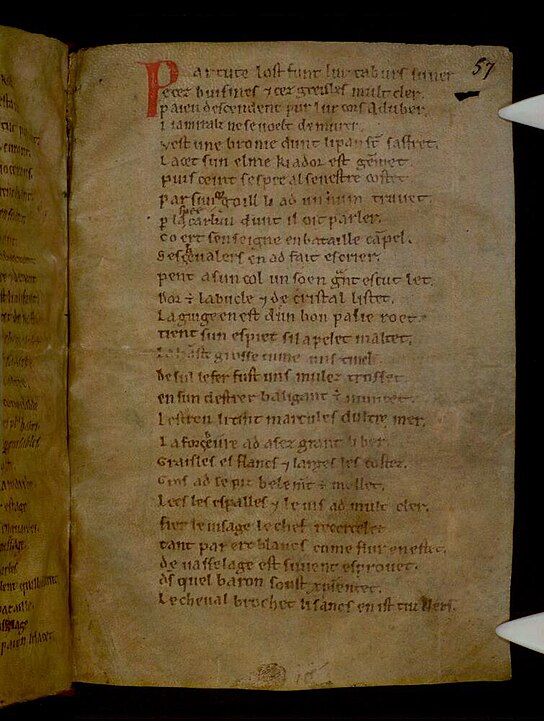
Chanson de Roland
French chansons de geste or epic poems are the prime examples of the transition between the Anglo Saxon heroic poetry to the medieval romance belonging to the Anglo Norman literature. Chansons de geste were short heroic epics that can be considered as late heroic as well as early romantic poems. This kind of poetry flourished in France during the period between ninth and twelfth centuries and were written mostly in north of France. 'Chanson de Roland' is one of the best examples of chansons de geste. Similar to these French epic poems were ‘The Battle of Brunanburh’ and ‘The Battle of Maldon’ belonging to the Anglo Saxon period.
While the north of France produced chansons de geste, the south of France (specially Provence) was know to develop the elements of courtly love. The short epic poems in French were produced by troubadours in the northern dialect of France. They were similar to heroic poetry and were mostly unaffected by the sentimental and courtly ideals of south France. It was eventually influenced by the love lyric of the South and thereby produced poetry where the loyalty to one’s ruler was as crucial as the loyalty to one’s lady or beloved. Both love and war are ritualized in such works. They depict a knight who overcomes all obstacles through his passion and honor. Since all of Europe was already under the influence of French culture and literature, England was not immune to it either.
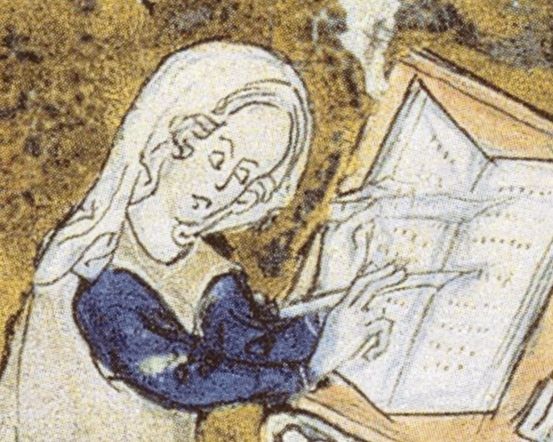
Anglo Norman literature written in French also included poetry and romances exclusively for entertainment. These works were based on folklore and also dealt with the supernatural. This genre was known as Breton Lais. The Lai is of Celtic origin with Welsh and Breton sources. Marie de France was the most well known author of lais or lays, most of which she dedicated to king Henry II. The aristocracy and nobility belonging to the Anglo Norman period was fascinated by the Celtic legends and tales. These poets were most probably bilinguals who wrote about the Celtic legends for a French audience. Marie de France is known for writing short romances also known as lais or ‘lays’. These short romances were originally told by Bretons. She was the first to write in the genre that came to be known as the Breton Lay or Breton Lai. One of her most popular lay or lai is 'Lanval' that might have been dedicated to Henry II for whom she usually wrote.
Chrétien de Troyes was another poet belonging to the Anglo Norman period in English literature. He created the genre of romance and chivalry. In this genre, the Knights were on adventure, had to endure and undergo ethical and psychological dilemma, and displayed courage and military prowess by saving women from various dangerous situations like giants, wicked knights, and monsters. Thus, both Marie de France and Chrétien contributed towards the development of ‘romance’ as a genre.
Jean Bodel divides the subject matter of French romance into three categories:
- Matter of France
- Matter of Britain
- Matter of Rome the Great
Romances based on the Matter of France
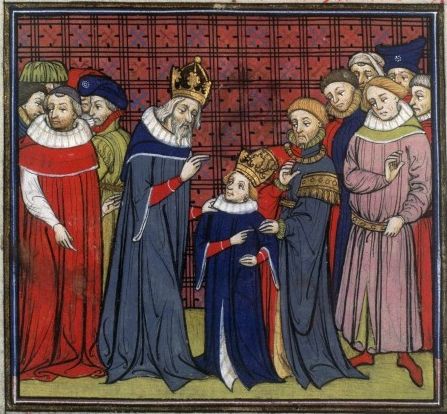
Romance on the Matter of France was developed the earliest. Poems dealing with the Matter of France are about King Charlemagne and his knights. The tone of these romances is similar to that of heroic poetry. 'Chanson de Roland' is a significant example of romance based on the Matter of France. It narrates the story of a courageous hero who unfortunately loses in a tough battle and dies. Initially the romances were focused upon King Charlemagne, but eventually the interest shifted towards his warriors and people around him. This was similar to the Arthurian cycle of romance where the interest shifted from King Arthur towards his knights. The driving force behind the romances written upon the Matter of France was the dominance of Christianity and the driving out of Saracen, the European invaders. They were also produced and even encouraged by the monks of various monasteries. While on the pilgrim roues, they used to attempt to portray their founders similar to one of Charlemagne’s heroes in order to garner more patronage. Another significant theme of these romances was the struggle of an individual against the tyranny of the Emperor.
Matter of Britain
Romances written about the matter of Britain included the stories about King Arthur and his knights, as evident in Monmouth’s and Layamon’s Brut. However, these two Anglo Norman writers were writing histories rather than romances. Romances about the Matter of Britain in Anglo Norman literature were derived from the French legends about King Arthur. These romances about king Arthur and the knights of the round table are entirely different from that of Chanson de Roland. They no longer have any traces of heroic poetry and only include the ideals of courtly love.
Matter of Rome the Great
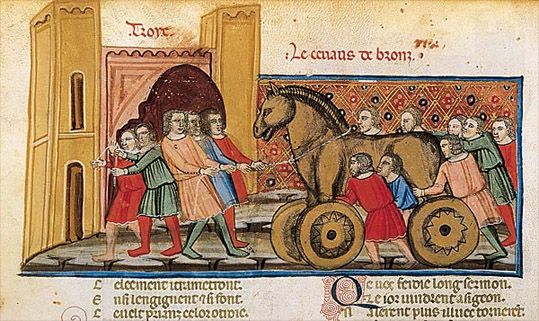
Romances based on the Matter of Rome elaborated the classical ancient world of Rome as seen from the perspective of the medieval age. These romances did not depict Rome as done by Virgil, Homer, or Pericles. The sources of these romances did not belong to the mainstream classical tradition. For instance, the romances based on the story of Troy were not based on Homer. Rather, they are sourced from the works of the fourth century Latin writer Dictys Cretensis or Dictys of Crete, and Dares Phrygius or Dares of Phrygia, who claimed to be the eyewitnesses (Dictys from the Grecian side and Dares on the Trojan side). During the middle ages, Virgil was popularly considered as a wizard rather than as a poet. Thus, romances based on the story of Troy such as 'Roman de Troie' by Benoit de Saint Maure were not based on Virgil. It was Benoit de Saint Maure who started the tradition which was later carried on by other medieval poets. 'Historia Destructionis Troiae' by Guido delle Colonne was the Latin version of 'Roman de Troie'. The French romances based on the Matter of Rome not only documented the Trojan War but also narrated the story of Troilus and Cressida that was eventually used by English writers.
The romances written about the Matter of Rome did not exclusively include the story of Troy. Other stories of the ancient world such as that of Thebes, Alexander the Great, Julius Caesar, etc. were also included. The romances depicted a clear medieval perspective of the Roman and Grecian civilizations. Since Greece was situated farther away, it was mostly seen as a place of legends and mythological creatures. These Greek legends and historic figures were seen as feudal lords (as in Chaucer’s Knight’s Tale). On the other hand, Rome was closer to the Europeans- it was Rome that had given the international language of learning, Christianity as well as roads and infrastructure. Thus, the Roman Empire was immensely admired during the medieval ages (not the Roman republic).
French romances based on the Matter of Britain and the Matter of Great Rome were a combination of both adventure and sentiments.
Development of the English Romance
Just as the romances were developed and became popular in France, they were also written in England. Since French in England was the language of the elite and English was the language of the common people, the French romances that were translated to English were distinctly different from the French originals. The English romances were being written for a less sophisticated audience who were more concerned about the storyline rather than the sophisticated speculations about honour and love that were a significant feature of French romance. While the French romances included both adventure and emotions, the English adaptations and translations excluded sentiments and included only adventure elements. Therefore, the English romances were shorter, cruder, and more straightforward than the French originals. Among the popular romances translated from French to English is 'Ywain and Gawain'. It is based on Matter of Britain and is translated from a romance by Chrétien de Troyes (titled ‘Ywain, ou le Chevalier au Lion’). During the middle ages, anyone who wanted to appreciate sophisticated, layered and elite literature read it in French.
The romances or courtly love poems were mostly orally recited. However, this in no way means that they were detached or removed from the larger European sphere of French romances, or the romancer who wrote in France or in England in French.
English Romances on the Matter of France
Romances belonging to the Anglo Norman period did not have much based on the Matter of France. However, the Charlemagne cycle was relatively popular in England and there were references of it in contemporary Anglo Norman literature. ‘Otuel’ is the oldest surviving romance based on the matter of France, written in English. It was written during the first half of the fourteenth century and deals with a duel fought between Roland and the Saracen Otuel. This was a popular topic and was used rather frequently in English romance. Other popular topics were about Firumbras, the Sarcaen king of Alexandria and his combat with Roland. The romance titled ‘Sir Firumbras’. Among the few existing Charlemagne romances in English is ‘Raif Coilyear’ which was written in Scotland during the later half of the 15th century. In this romance, there is a fusion of folktale with the Charlemagne background.
English Romances based on the Matter of Britain
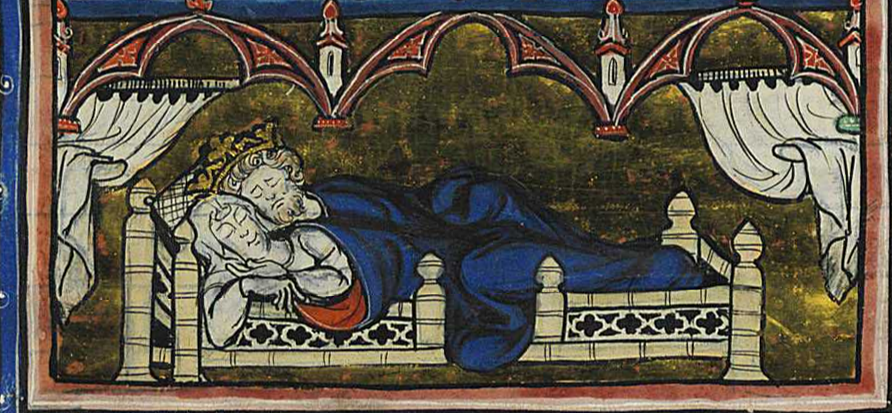
The English romances based on the matter of Britain were rather interesting. Significant examples include: ‘Morte Arthure’ , an alliterative romance, ‘Le Morte Arthure’ that includes love between Lancelot and Guinevere, combat between Lancelot and Arthur and the Maid of Ascolot; and 'Sir Gawain and the Green Knight'- one of the greatest Anglo Norman literature in English. Romances based on the Matter of Britain belonging to the Anglo Norman period in English literature could be categorized as:
- Romances about Arthur’s youth- they include the characters of Merli. The middle English romance titled ‘Arthur and Merlin’ is an example of such poem.
- Romance about Gawain: Gawain was the most popular hero of the medieval English Romance. English romances such as the ‘Gawain and the Green Knight’, ‘Golagrus and Gawain’, and ‘Ywain and Gawain’ were all about Gawain.
- About Lancelot: Lancelot was not as popular in England as it was in France and French romances. English romance titled ‘Le Morte Arthure’ is among the few significant romances about Lancelot written in English.
- Romances about the Holy Grail: This subject was not much explored in English romances during the middle ages (until Malory). ‘Joseph of Aritmathie’ is the one of the earlier examples of such romance. It is also the earliest alliterative verse written in Middle English.
- Perceval Legend: ‘Sir Percyvelle of Galles’ is the only significant example of English romance in Anglo Norman literature. The Perceval legend was a famous folktale that was infused with the Arthurian stories during the 12th century.
- Story of Tristram or Tristan: This later became the most popular Arthurian stories. It is about the love story between Tristram and Isoude or Iseult, which is older than the story of Lancelot and Guinevere. ‘Sir Tristram’ is the only English romance belonging to the Anglo Norman literature that represents the story of Tristram. It was composed during the end of 13th century.
Sir Gawain and the Green Knight
This is one of the most significant romances belonging to the Anglo Norman literature. It is also one of the four poems written in the Northwest Midland dialect and was composed in the late 14th century. It is an alliterative poem. The poem is deeply rooted in folklore and has multiple allegorical interpretations. The narrative is extremely lively and bright and includes ideals of courage and courtesy embodied by Gawain. In this English romance, Gawain is at his heroic best. As stated earlier, Gawain was the central heroic figure in the Arthurian cycle and was the epitome of courage, courtesy, and virtues. However, Gawain was eventually replaced by Lancelot as the central heroic figure even in English literature.
Romances about the Matter of Rome written in English
The English romance based on the Matter of Rome were miscellaneous. Romances of this category included both verse and prose about the life of Alexander, poems about Troy, destruction of Jerusalem, and Chaucer’s Knight’s Tale. Example of medieval romance in English based on the matter of Rome is 'The Gest Historiale of the Destruction of Troy'.
Romances based on the Matter of English History
Besides the romances based on the matter of France, Matter of Britain, and Matter of Rome, there was another category of romances that was exclusive to the Anglo Norman literature in English. This was the group of romance that was based on the matter of English history. These romances were mostly translated in English from French. During the Anglo-Norman period, no English hero was seen worthy of being written about unless it had been considered significant by a French poet. The romances written on the matter of England included the stories of English heroes such as Athelstan, Offa, Earl Godwin, Eadric the Wild, Hereward the Wake, etc. They also deal with the traditions associated with the Vikings raids.
King Horn
The most significant English romance based upon the Matter of England is ‘King Horn’. The romance is a great example to highlight how the English romancers excluded the courtly elements, and the topic of love significant to French romances, and focused entirely upon adventures and the change of fortunes of the English hero Horn. The romance deals with the story of King Sudene’s son Horn. After king Sudene is killed by the pirates, Horn arrives at Westerness and falls in love with Rimenhild, the King Aylmar’s daughter. After spending time at Westerness, Horn goes away to prove his knighthood and kills a pirate crew. When King Aylmar finds Horn and his daughter locked in an embrace, he banishes Horn and he goes to Ireland. There, he performs various knightly deeds. Eventually, he returns to Westerness in disguise just in time to prevent Rimenhild’s marriage to another prince. In the end, Horn successfully gets his kingdom back and settles there with his queen Rimenhild. The poem is composed in short rhyming couplets. Another early 14th century romance titled 'Horn Childe' and written in North Midland was also based on the Horn, the English hero.
Havelok the Dane
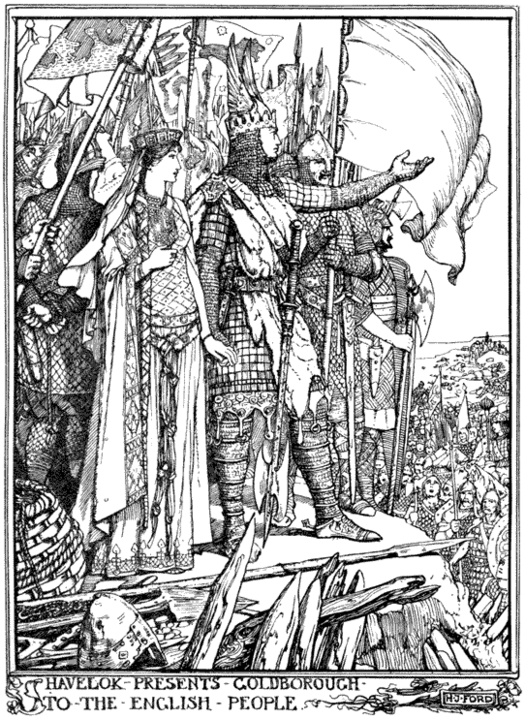
The romances based on the Matter of England included a combination of history and folktales where stories about exile, returning of the English hero, reuniting of lovers were common.
'Havelok the Dane' is another Matter of English romance that narrates the events during the Vikings raid. The romance fuses the folktale with history. It is one of the most successful medieval romance about adventure. The story of the romance begins with the death of King Athelwold, and the appointment of Earl Godrich as the guardian of Athelwold’s infant daughter Goldeboru. Unfortunately, Godrich imprisons Goldeboru and takes over the kingdom. The story then shifts to Denmark where Earl Goddard, like Godrich, is the guardian of king Birkebayn’s children- Havelok, and his two sisters. He too usurps the Danish kingdom, kills off the king’s daughters and hands over Havelok to fisherman (called Grim) who is instructed to drown him. However, Grim becomes aware about Havelok’s royalty and saves him. He, along with Havelok, his wife and five children escape Denmark and arrive in England. In England Grim founded a town of Grimsby. Havelok becomes a scullion to the cook of Earl Godrich. He impresses everyone with his beauty, strength, and physique. Unaware about his royal blood, Godrich decides to get Goldeboru married to Havelok and then usurp the throne. The two are forced to marry. However after being married, Goldeboru comes to know the truth about Havelok through supernatural intervention. Eventually, Havelok arrives in Denmark. There, he regains his Danish throne and then returns to England and regains the kingdom of England as well. The romance is composed in octosyllabic couplets and just like King Horn focuses on adventures rather than the sentiments and elements of love. All the events of sports and Havelok’s activities are portrayed with authenticity. The romance also paints a detailed picture of the common people of England at work and popular sports of the country.
Miscellaneous Romances in English belonging to the Anglo Norman Literature.
They include romances such as ‘Floris and Blancheflour’ composed in mid-13th century. The romance is based on a famous Eastern legend that came to Europe through the Crusades. The romance is a product of the literary cross-fertilization facilitated by the intermingling of the Welsh, Norman and Anglo Norman traditions in England. It is significantly different from the courtly love traditions or the tales of adventures that were so popular during the age.
Another significant romance in English is “Sir Orfeo”. In this romance, the classical story of Orpheus and Eutrydice is written as a Breton Lai or lay. It is a light hearted fairy story that is far removed from the solemn Greek myth of Hades.
Other themes of medieval romances include patience of an abused woman, courtly situations like that in ‘Ipomadon’, combinations of history and folklore, etc. ‘Ipomadon’ is significant as even though it was written in English, it still retains French elements of a romance, that were otherwise removed in English translations. It is translated from an Anglo-French romance.
The English romances during the Anglo Norman period were undergoing various important experiments. The English were learning to rhyme just like the French and were writing in various kinds of stanzas attempting to achieve the finesse equivalent of the French poetry. It was only during the Age of Chaucer that they could achieve it.
Concept of Courtly Love in Anglo Norman literature
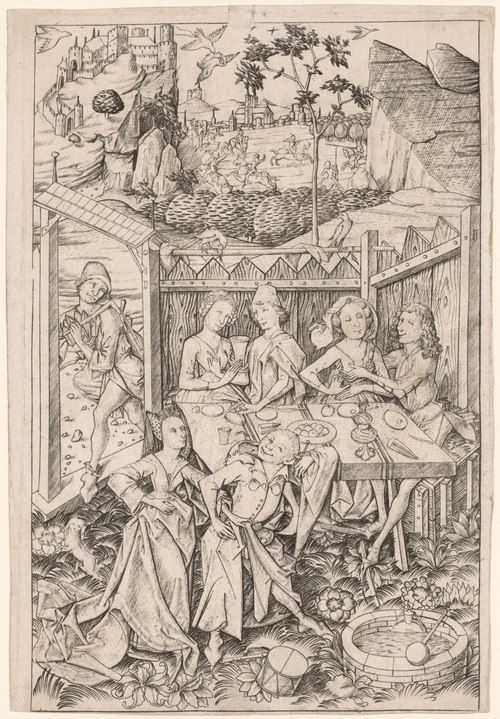
The concept of courtly love first began with the love lyrics of Provence in southern France. Courtly love was one of the most important and revolutionary elements in European literature and sensibility. Earlier, love between a man and a woman was perceived simply as physical passion, or as affection, or as madness. However, with the love poetry of the troubadours, the concept of love was renewed. To them, love was an act of service of a slave towards his master without any external influence. In poems dealing with courtly love, a knight served the mistress of his choice and readily suffered all hardships and indignity for her sake. The lady occupied all his thoughts. The language used by the knight for the his lady is almost religious as if referring to the Virgin Mary. We must keep in mind that there is a mutual influence between the courtly love tradition and the cult of the Virgin Mary. In the courtly love tradition, the poet or the lover is ready to endure all hardships and pain for the slightest of favour by his chosen lady, and is loyal to her throughout his life. Irrespective of how the lady treats him, the knight remains her humble vassal while she remains his liege. Love is its own reward and even if the knight yearns and longs for more, his love and reverence towards his lady does not get affected if he does not get what he wants. He cannot even think of ceasing to love his lady and is ready to stay in emotional pain of unrequited love. Afterall, it is better to suffer and endure the agony of unrequited love than to have no lady to love and long for.
Another important feature of romances about courtly love was that the lovers were never husband and wife. A husband was never a lover of his wife. Thus, the courtly love tradition was an idealization of adultery. The notion of love was linked to the institution of marriage only after the sixteenth and seventeenth century poets introduced the idea in domestic lives. It is interesting to know that the popular notion of falling in love, wooing, courtship, and eventually getting married that has been the theme of innumerable fiction, poetry, and drama, is a modified version of the medieval courtly love tradition.
In medieval romances about courtly love tradition the poet or the lover of a lady does not think about the husband at all. The husband is not his rival. However, it is any other lover who seeks the attention or love of his lady in the same way as the poet or the knight does. The lover abides by a strict code of honor and also dedicates himself to the general causes about women- always defending and protecting them. The reverence and dedication towards the lady stems from the way Latin writers such as Ovid wrote about Love. The Latin writers saw the woman with a religious devotion, like the Virgin Mary. This shifted the medieval notion of a woman as Eve, the source of all misery and problems of humankind to that of a woman as Virgin Mary, the ideal maidenhood.
In order to understand the origins of the courtly love tradition, we must also understand the social conditions of the medieval era. The medieval European civilization was divided into various separate social circles. Within a single social community , the manor’s lord who lived with his lady, was the guardian. He was accompanied by various men who used to guard the castle or the manor. Although these men were above the status of peasants, they were lower in status from their lord and the lady. While the lord of the manor was the most superior and the ultimate guardian, the lady was the second most superior. On occasions when the lord had to leave for any crusade, it was the lady who became the most powerful without any exceptions. Therefore, reverence and service were automatically commanded by the lady. Additionally, if any man had to be in love with the lady, he had no other way but to express it in terms of servitude and courtesy.
Before the new poetry about love developed, the lords used to have personal entertainers or jongleurs. When the troubadour poetry began, the entertainers who belonged to the lowest social category, took on the position of the court poet. Thus it was the jongleurs who eventually became troubadours. This is another reason why the lover or the poet holds the lady with utmost respect and admiration. Marriage between such a poet and the lady was naturally out of question. Another reason that the courtly love did not culminate in marriage was that during the medieval times, marriage was linked only with the transition of property and inheritance. Love had no place in it. Love and romantic relations between the genders was also not recognized by the Church as a virtue. All these conditions impacted the relation of courtly love and marriage. The lady was always the mistress and never a wife, only to be courted secretly. The lover did not have any intentions of getting married to the lady even though he yearned for the consummation of his love without getting married to her. Infact, the idea of marriage seemed to spoil everything. The idea of love and romance was linked to marriage much later. Interestingly and eventually, passion was only perceived as virtuous only if culminated in marriage.
The concept of courtly love developed among aristocracy and was far removed from the general masses. Although we have little evidence of how realistic was the practice of courtly love, the psychology of romantic love that eventually became popular in European literature began with the medieval allegories of courtly love.
Conclusion
All Anglo Norman literature in English was not based on French literature. 'The Anglo-Saxon Chronicle' continued to be written at the monastery of Peterborough. The Anglo-Saxon Chronicle is significant work of Anglo Saxon literature as it documented the significant changes that the English language was undergoing during the time and also recorded the Norman rule from the English point of view
The Anglo Norman period in English Literature can be roughly summarized under the following points.
- French replaced English as the language of nobility and aristocracy, while English was reduced to the language of the general masses.
2. Anglo-Norman period or the medieval period in English literature saw the decline of heroic poetry.
3. Alliteration was simplified to suit the common population of England.
4. English Romance and courtly love tradition developed during this period.
5. Rhymed verses were also introduced to English poetry
References
Daiches, David. A Critical History of English Literature. 1994
Greenblatt, Stephen, and M H Abrams. The Norton Anthology of English Literature. Vol. 1. New York ; London, W.W. Norton & Co, 2012.
Sanders, Andrew. Short Oxf Hist of Eng Lit 3/E. 2004.
Read More
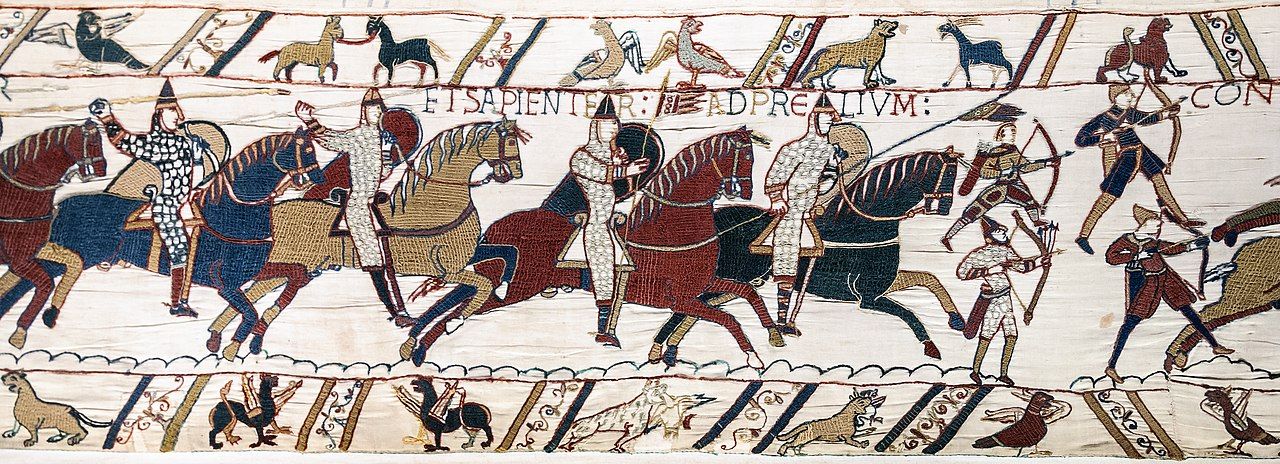
Anglo Norman history
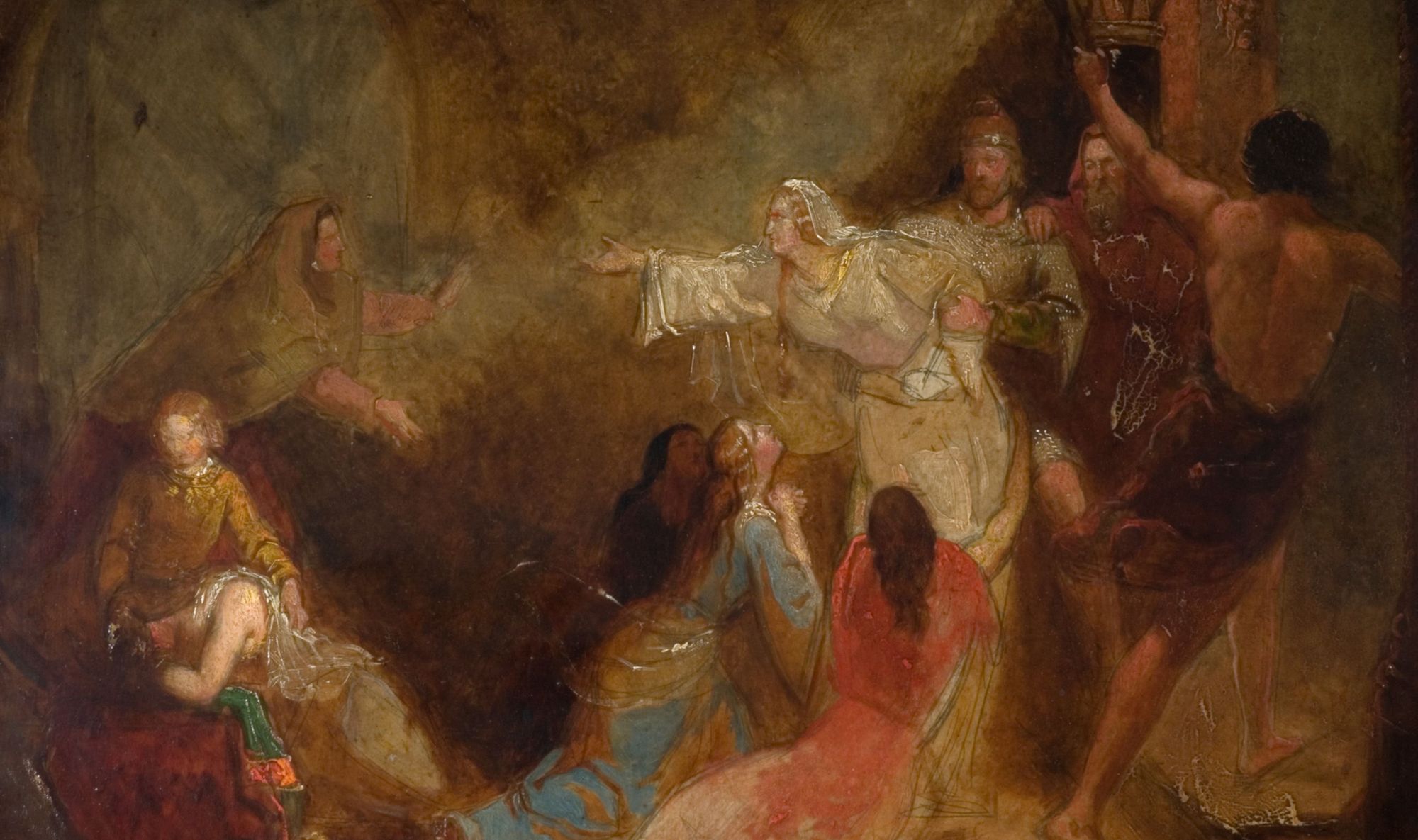
Anglo Saxon Literature
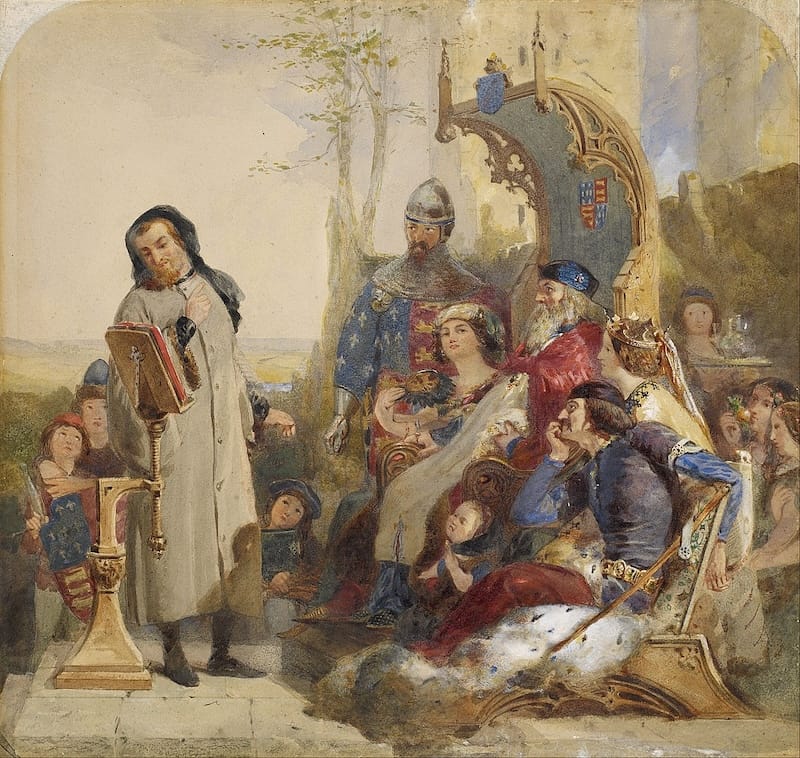
Age of Chaucer: His life, Works & their Significance
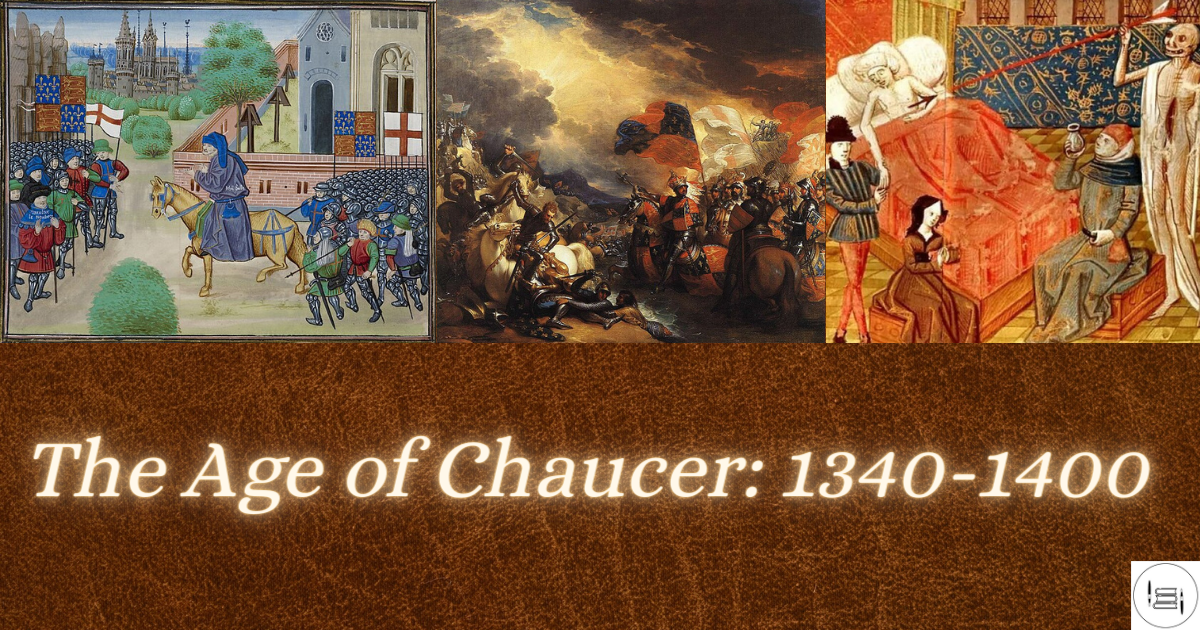
The Age of Chaucer: 1340-1400
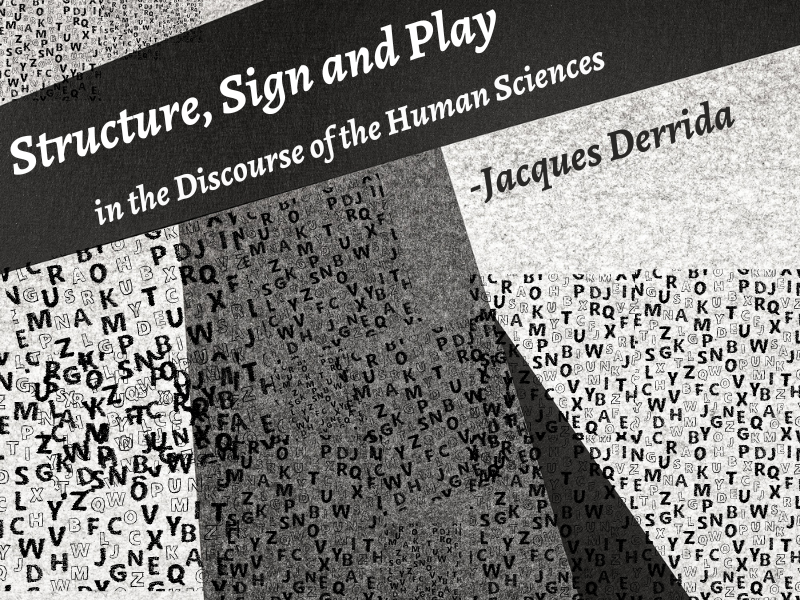
Derrida's Structure, Sign and Play

